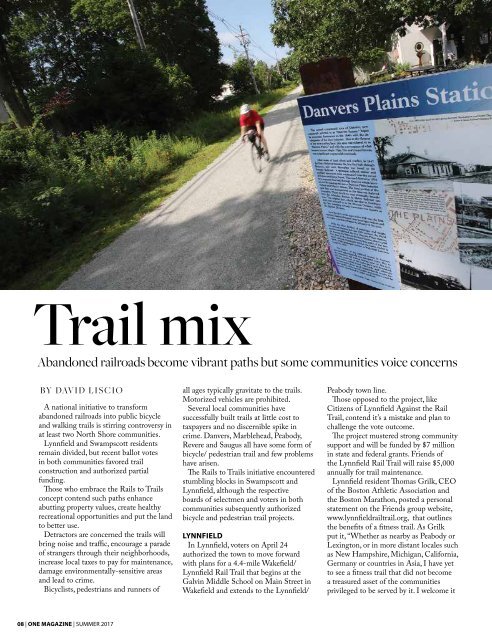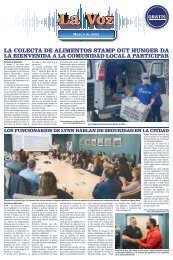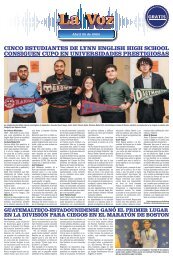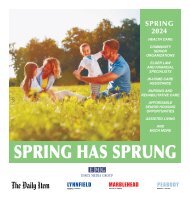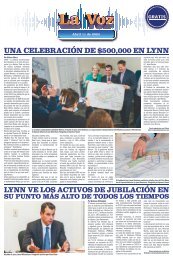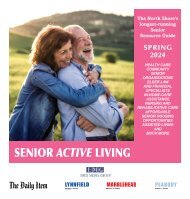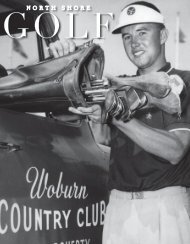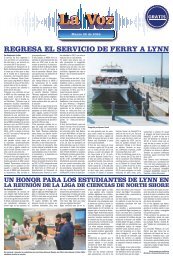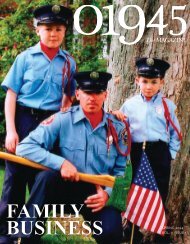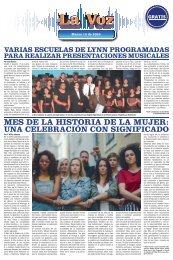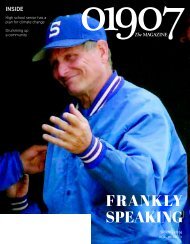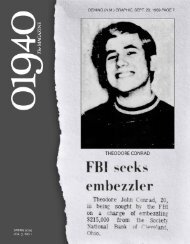ONE2017finaledits 08-03-17
Create successful ePaper yourself
Turn your PDF publications into a flip-book with our unique Google optimized e-Paper software.
Trail mix<br />
Abandoned railroads become vibrant paths but some communities voice concerns<br />
BY DAVID LISCIO<br />
A national initiative to transform<br />
abandoned railroads into public bicycle<br />
and walking trails is stirring controversy in<br />
at least two North Shore communities.<br />
Lynnfield and Swampscott residents<br />
remain divided, but recent ballot votes<br />
in both communities favored trail<br />
construction and authorized partial<br />
funding.<br />
Those who embrace the Rails to Trails<br />
concept contend such paths enhance<br />
abutting property values, create healthy<br />
recreational opportunities and put the land<br />
to better use.<br />
Detractors are concerned the trails will<br />
bring noise and traffic, encourage a parade<br />
of strangers through their neighborhoods,<br />
increase local taxes to pay for maintenance,<br />
damage environmentally-sensitive areas<br />
and lead to crime.<br />
Bicyclists, pedestrians and runners of<br />
all ages typically gravitate to the trails.<br />
Motorized vehicles are prohibited.<br />
Several local communities have<br />
successfully built trails at little cost to<br />
taxpayers and no discernible spike in<br />
crime. Danvers, Marblehead, Peabody,<br />
Revere and Saugus all have some form of<br />
bicycle/ pedestrian trail and few problems<br />
have arisen.<br />
The Rails to Trails initiative encountered<br />
stumbling blocks in Swampscott and<br />
Lynnfield, although the respective<br />
boards of selectmen and voters in both<br />
communities subsequently authorized<br />
bicycle and pedestrian trail projects.<br />
LYNNFIELD<br />
In Lynnfield, voters on April 24<br />
authorized the town to move forward<br />
with plans for a 4.4-mile Wakefield/<br />
Lynnfield Rail Trail that begins at the<br />
Galvin Middle School on Main Street in<br />
Wakefield and extends to the Lynnfield/<br />
Peabody town line.<br />
Those opposed to the project, like<br />
Citizens of Lynnfield Against the Rail<br />
Trail, contend it’s a mistake and plan to<br />
challenge the vote outcome.<br />
The project mustered strong community<br />
support and will be funded by $7 million<br />
in state and federal grants. Friends of<br />
the Lynnfield Rail Trail will raise $5,000<br />
annually for trail maintenance.<br />
Lynnfield resident Thomas Grilk, CEO<br />
of the Boston Athletic Association and<br />
the Boston Marathon, posted a personal<br />
statement on the Friends group website,<br />
www.lynnfieldrailtrail.org, that outlines<br />
the benefits of a fitness trail. As Grilk<br />
put it, “Whether as nearby as Peabody or<br />
Lexington, or in more distant locales such<br />
as New Hampshire, Michigan, California,<br />
Germany or countries in Asia, I have yet<br />
to see a fitness trail that did not become<br />
a treasured asset of the communities<br />
privileged to be served by it. I welcome it<br />
<strong>08</strong> | ONE MAGAZINE | SUMMER 20<strong>17</strong>


